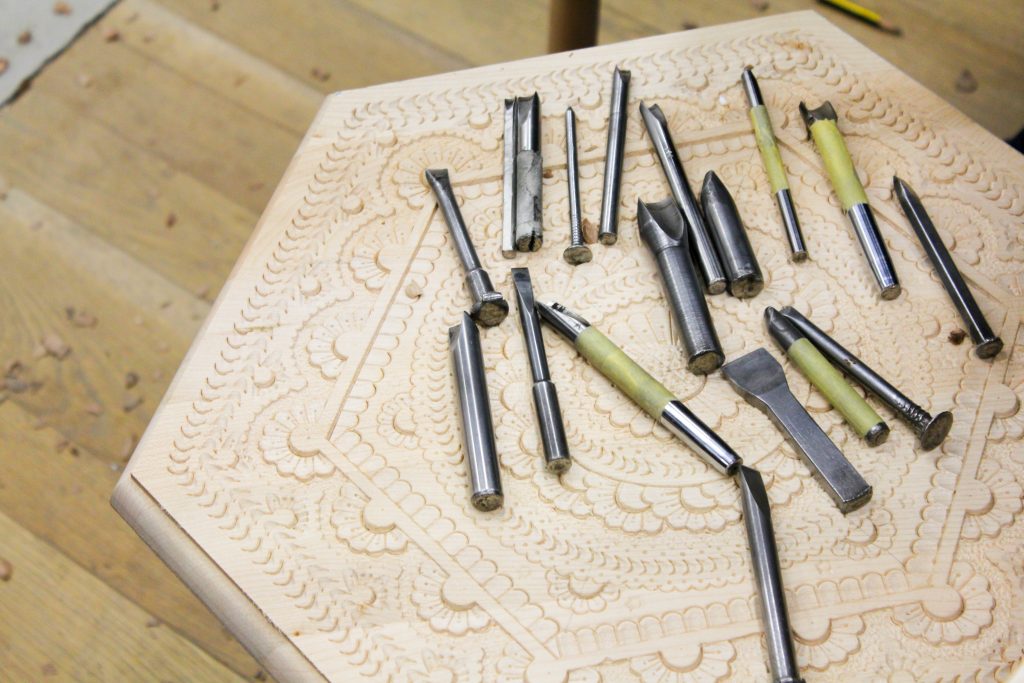Factory Visit: Zanat, Traditional Woodcarving in Bosnia and Herzegovina
Touring the Konjic factory where tradition and contemporary design merge

Bosnia and Herzegovina may not be known as a center of the design world, but there’s a dynamic company there bridging the gap between traditional craft and contemporary design. Earlier this year, we traveled to Konjic—a small village not far from Sarajevo—following an invitation from Zanat, a woodcarving company founded in 2015 by Adem and Orhan Niksic. But the family’s experience with woodcarving goes much further back.

The Niksic’s first woodcarving business was established in 1919 in Konjic where, over the following decades, over 30 others popped up. “But today we are the only one left,” Adem tells us, as we enter their factory’s warehouse, which is filled with stacks of raw local wood. The mountains of Bosnia and Herzegovina are covered with forests of maple, walnut, ash and oak, which Zanat sources sustainably for their wares. Some of the huge tree trunks feature strange imperfections, which Orhan tells us are from grenades—scars from the Yugoslav War. “We still find them, even if the war ended 15 years ago,” he says. Despite the conflict, Orhan was able to attend college in the US. After, he moved to the Middle East, but eventually his family’s century-old tradition called to him.

Orhan and his brother teamed up with their longtime friend Mark Bartolini to reimagine the craft. The brand’s respect for and adoration of wood is evident throughout their facility—it’s never hidden away, but scattered around and begging to be touched. In the carpentry space, rough pieces of wood are cut, assembled, glued and pressed and then cut again and milled into chairs, stools, tables, cabinets or smaller objects like trays and bowls.

The semi-finished products are then sent over to the woodcarving workshop. Here, artisans handle fascinating tools with speed and precision. Craftspeople of varying ages and all genders complete pieces that balance perfection with imperfection and craft with nature.

The company’s creative director, Swedish designer Monica Förster, has been there since the beginning, when they had only 16 staff members (there are now 60 employees). Orhan says, Förster was “surprised how quickly we grew, but here in Bosnia almost every piece of furniture is customized. You are always changing things and you learn how to make things quickly. That’s why our entire company looks like a prototype department.”

In fact, every piece Zanat creates is made-to-order, and they develop several custom projects of various scales. Their catalogue comprises around 70 designs, but the number of options regarding wood types, finishes and carving patterns results in 900+ possible combinations.
Carvings are not a decoration on a finished design, they are the essence
Further, the company has collaborated with Studioilse, Jean-Marie Massaud, Ludovica+Roberto Palomba, Sebastian Herkner and many others. Orhan explains that these partnerships occur fairly organically. “They see the potential and they like our technique,” he says. “There are different ways designers see the carvings—some of them hate decoration, some love texture and pattern, some are more on the minimalistic side. But when we send briefs, we always include a sentence asking to ensure that carvings are not a decoration on a finished design, they are the essence.”

Working with contemporary designers keeps the team forward-thinking, but tradition is just as crucial—Zanat, after all, means “craft.” Beyond family history, Zanat is keeping a piece of local culture alive. In 2017, Konjic’s woodcarving was officially placed on the UNESCO Intangible Cultural Heritage of Humanity list, elevating and protecting it for generations in Bosnia and Herzegovina and all over the world.
Images by Paolo Ferrarini












